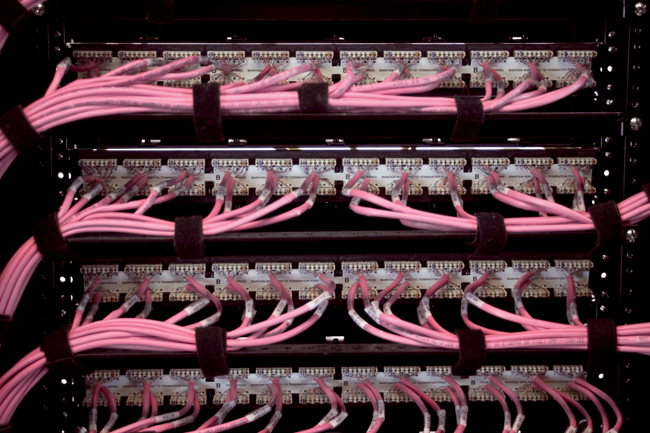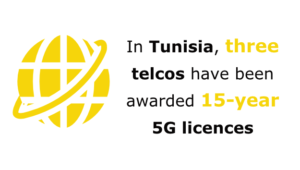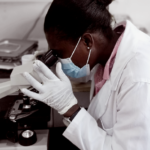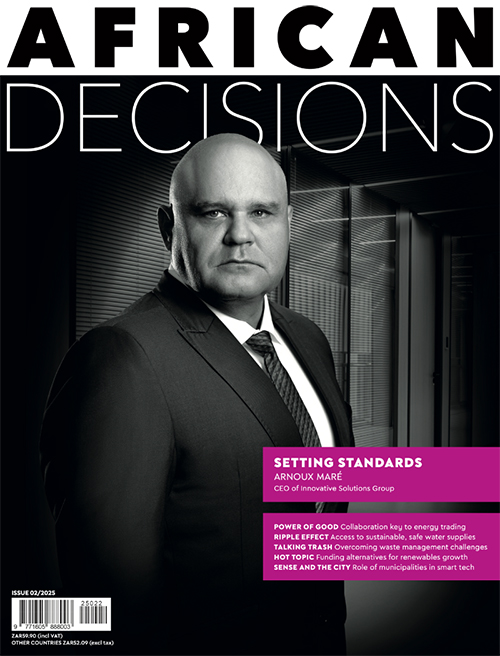Since the moment the internet first dialled into Africa – sometime around 1988, when Rhodes University was granted the first South African IP address – the continent has been flooded with techie buzzwords.
You may have lived through some. You may have invested money in others (try not to cringe as you read them). Virtual reality. Web 2.0. DRM. Y2K. Dot-bombs. The paperless office. The information superhighway. Crowdfunding. User-generated content. Big data. The cloud.
The latest IT buzzword is the Internet of Things (IoT). It’s so hot right now that, in mid-August, US-based IT research and advisory firm Gartner confirmed that it had reached the height of its hype cycle.
So what is the IoT, exactly? How will – or can – it help drive growth in Africa? Is the IoT really, well, a thing?
Simply put, the IoT is a vision of the world where any electronic device that has an on/off switch can be connected to the internet and, via the internet, to other devices. We’re not just talking computers or smartphones: it includes pretty much anything, from washing machines to coffee makers to the lights in your house.
According to Gartner, by 2020, the installed base of the IoT will exceed 26 billion units worldwide, while industry research firm IDC predicts that the IoT market will hit an eye-watering US$7.1 trillion by the same year.
Mark Warren, machine-to-machine (M2M) solutions manager at digital security firm Gemalto South Africa, sees the IoT as an evolution of M2M technology. ‘M2M is the connection of individual assets or devices to track something or optimise a part of a process,’ he says.
‘The IoT is about creating a flexible network of a wide range of connected assets and to leverage big data and the cloud to optimise entire manufacturing, logistical or other processes, and create additional value.
‘IoT merges M2M, big data and cloud. Now everything can – and quite possibly will – be connected, from your toaster to your fridge or even your office plant. The possibilities are endless. At the moment it seems that IoT is at the peak of a hype cycle with incredibly high expectations. Nevertheless, IoT has the potential to transform industries as well as the way we live and work.’
The IoT also has the potential to transform entire economies. It’s already starting to happen, hence the hype. ‘Much like cloud computing, which was also once a buzzword in the South African market, the IoT will become entrenched in business sooner than we may be prepared for,’ says Sebastian Isaac, business development manager at consumer electronics distributor Rectron. ‘It’s going to demand a change in the way we do things in the channel.’
By 2020, the installed base of the IoT is expected to exceed 26 billion units, while the IoT market could hit an eye-watering US$7.1 trillion
John Eigelaar, co-founder of Johannesburg-based electronic engineering research and development solutions provider Keystone Electronics, says: ‘Machine-to-machine communication is a business tool, not just a gimmick or a trend. It can be used to gather data and make decisions about your business in real time, as it happens.
‘That level of insight and control into processes, that used to take hours or months to collate, cannot be undervalued. Today you may be gathering information about remote plants or fleets or vehicles through manual assessment or technology tools handled by people. Your data is arriving late and by the time you have a chance to collate it, it’s too late and you don’t have a firm hand on what’s happening in different parts of the business,’ he says.
According to Eigelaar, an IoT solution – in terms of devices that communicate seamlessly with one another in real time – can be applied to anything. ‘If your goal is to manage electrical meters or generators, you can optimise your data collation and, should a system fail, you can instantly locate the issue and send someone to repair it.
‘It also taps into the idea of preventative maintenance, which is obviously a significant improvement on retrospective maintenance. Devices can be programmed to detect specific issues in advance and notify the relevant personnel, allowing for time to send for repairs. In environments where a complete shutdown of equipment can result in losses of billions per hour, this can save a significant amount of money.’
To appreciate the potential impact of the IoT on Africa, it is important to comprehend the current state of the continent’s internet. Cape Town-based supply chain consultant Danie Schoeman painted a clear picture of it at the third DASIK (Development and Strengthening of Industry-driven Knowledge-transfer between developing countries project) industry workshop, held at SYSPRO in Johannesburg this past July.
‘Right now, the internet’s contribution to GDP growth is still low – only about 1.1% of GDP, according to McKinsey,’ Schoeman said. ‘According to the International Telecommunications Union [ITU], only 16% of the continent’s one billion people are online.
‘However, this share is rising rapidly as mobile networks are expanding and the cost of internet-capable devices continues to fall.’
According to Schoeman, household consumption is a considerable contributing driver of internet growth. ‘Africa has the world’s most youthful population, with more than 200 million people aged 15 to 25 – according to the United Nations Population Division – users that favour the use of technology,’ he said.
‘Africa is also urbanising fast, and as urbanisation increases, incomes rise. McKinsey projects that some 128 million households will have significant discretionary income by 2020. [They] also estimate that more than half of urban African consumers already have internet- capable devices today.’
Schoeman pointed to the rapid rise of mobile telecoms as playing a major role in Africa’s recent economic growth. ‘According to ITU research, mobile subscriptions across Africa increased from fewer than 25 million in 2001 to 720 million by 2012,’ he said.
‘This has had a remarkable impact on Africa’s development, connecting people who previously had little or no access to telecommunications due to the scarcity of fixed-line infrastructure. This connectivity has revolutionised the way SMEs, farmers and informal traders operate, greatly expanded their access to customers, suppliers and markets, and spurred innovation and efficiency across various sectors. African businesses have been global pioneers in areas such as mobile payments and mobile education.’
Schoeman said this adoption of mobile phone technology puts the internet’s potential for the continent into perspective. ‘The internet’s effects in Africa could be similar to that of the mobile phone, and its impact could be multiplied well beyond the levels seen in developed economies today.’ The thinking is, if Africans can embrace the IoT the way they’ve embraced mobile phone technology, the continent could emerge as a global ICT leader.
The thinking is, if Africans can embrace the IoT the way they’ve embraced mobile phone technology, the continent could emerge as a global ICT leader
The impact of M2M technology will be felt most emphatically on the ground as people harness the connectivity of their internet-connected mobile phones. According to Warren, this tech – along with the IoT – can bring massive benefits to Africa, positively changing the way people live and work. He believes the continent is well positioned to get its machines communicating with each other.
‘M2M is based on wireless technology, the same as GSM,’ he says. ‘Machines can “talk” to each other using the GSM wireless network. There is no need for cables or a costly infrastructure to be in place. IoT can bring Africa enhanced services to the benefit of all people.’
Warren sketches a few examples of possible IoT implementations. ‘Through M2M, clinics in remote villages could be connected in real time to receive medical advice and results,’ he says.
‘New mobile health-monitoring devices and applications can be developed to help with the treatment of disease, and offer remote healthcare services and patient-health monitoring. The implementation of these kinds of solutions is becoming more feasible thanks to the modernisation of Africa’s cellular network and increasing number of mobile connections.’
Pfungwa Serima, CEO of SAP Africa, sees the IoT as the next step in the evolution of the way data is processed.
‘Let’s take a step back here. We spent [the] last half of the 20th century building what [business advisor and best-selling author] Geoffrey Moore calls systems of record – the structured transactional data that is the core of every business.
‘These systems of record capture every dimension of our lives, be it financial transactions, human resources, order processing, inventory management, customer relationship management, supply chain management, product life-cycle management or more.
‘With the explosion of the internet in the last few years, enterprise IT saw a shift towards systems of engagement, encompassing the edge of the business, leveraging social networks, and processing loosely structured data that is constantly changing. This shift towards systems of engagement resulted in more agile business processes, seizing new business opportunities at the edge of the business.’
Now, says Serima, people are witnessing another massive revolution where enterprises will need to build systems of things in parallel to systems of engagement to harness the IoT.
‘As the previously dumb devices on the edge become intelligent and get connected, systems of things will be needed to source, capture, analyse, predict and act on the data in real-time.’
So what does this mean for Africa? ‘I believe it’s a great opportunity for us, not only to create entire new business models for companies –moving the value proposition from products to services – but to use technology to make a real impact at a socio-economic level,’ says Serima.
‘In the utility sector, Africa’s utility companies need to meet the growing demands of urbanising populations and booming industrial sectors. IoT can help with smart metering and distribution, to be able to accurately measure and predict demand and generation.
‘In agriculture, we could be using IoT technologies to improve yields. In healthcare, there’s a real opportunity to use IoT to use our human capital more effectively, and deliver better services. In the capital goods sector, we could be streamlining industrial processes and helping marginal mining operations do more with less.’
Serima insists that for the IoT – and billions of connected devices – to become useful, we need systems of things.
‘Luckily, the foundational blocks of this are the same as those of systems of engagement and systems of records: big data, fast data, predictive analytics, cloud and mobile. If African companies get these building blocks right, and are able to embed their Internet of Things applications directly into their existing business processes, they will be able to chart their own destiny,’ he says.
As the IoT spreads across the continent, with businesses and individuals harnessing the power of a massive network of interconnected devices, who knows… Perhaps the next generation of IT buzzwords will start coming out of Africa.
















